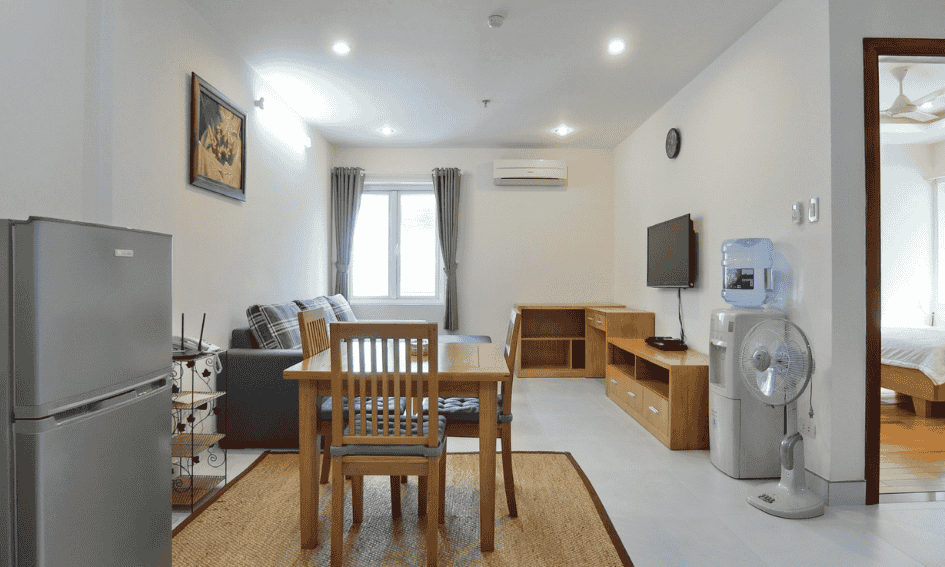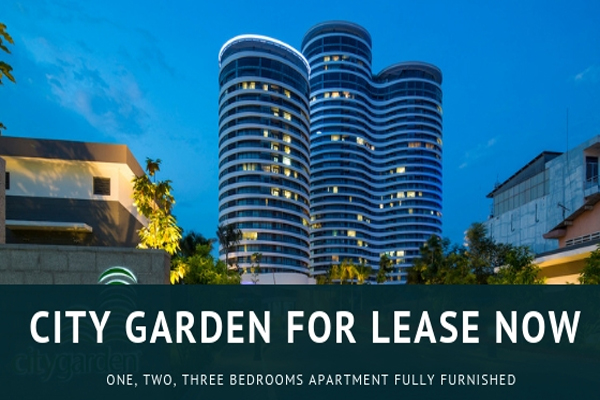A Guide to Apartment Rental in Ho Chi Minh City – Essential Advice for Expatriates
30 Sep, 2025

Ho Chi Minh City (HCMC) has become one of the most attractive destinations for expatriates in Southeast Asia. As Vietnam’s largest economic hub, the city combines a vibrant lifestyle with diverse housing opportunities, making it an ideal place for both professionals and families. The growing expat community has led to a surge in demand for modern apartments that offer international-standard facilities and easy access to business centers, schools, and entertainment.
For expats, apartment rental in Ho Chi Minh City provides flexibility, a wide range of prices, and options across various neighborhoods. However, navigating the local market can be challenging, particularly when it comes to understanding legal requirements, evaluating prices, and choosing the right district. This guide aims to provide essential advice for expatriates, helping you rent with confidence and avoid common mistakes.
Types of Apartments Available
Expats in Ho Chi Minh City can choose from several types of apartments, each offering unique advantages depending on budget and lifestyle.
Serviced Apartments
These are fully furnished units that come with hotel-like services such as cleaning, laundry, and 24/7 reception. They are popular with short-term renters and professionals who value convenience. While more expensive than standard apartments, they provide hassle-free living.
Standard Apartments
These range from mid-range to luxury high-rises. Mid-range apartments, often located in areas like Binh Thanh or District 10, provide good value for money with basic facilities. Luxury apartments in District 1, Thao Dien, or Phu My Hung offer premium amenities such as gyms, swimming pools, and security systems, catering to expats seeking higher comfort.
Studios and Shared Apartments
For single expats or those on a tighter budget, studios and shared apartments are affordable choices. They may have smaller living spaces but are usually located in convenient areas with quick access to transportation, markets, and cafes.
By understanding the differences between these types, expats can better match their housing choice with their personal needs and financial plan.

Popular Areas for Expats in Ho Chi Minh City
Ho Chi Minh City offers diverse neighborhoods, each appealing to different expat lifestyles and budgets. Choosing the right district can make a big difference in comfort and convenience.
District 1: The city’s commercial and cultural hub. Apartments here are expensive, but they offer proximity to offices, shopping malls, restaurants, and nightlife — ideal for professionals who want to live in the heart of the action.
Thao Dien, An Phu, and Binh An (District 2): Often called the “expat village,” these areas are known for international schools, green surroundings, and Western-style amenities. Families prefer this district for its safe environment and community feel, though rental prices are relatively high.
Binh Thanh District: Located between District 1 and District 2, Binh Thanh provides both high-end developments like Vinhomes Central Park and more affordable local apartments. It’s popular with young expats and professionals who want central access without District 1 prices.
District 7 (Phu My Hung): A well-planned area with modern infrastructure, international schools, shopping centers, and parks. It’s highly attractive to families, with rents generally in the mid-to-high range.
Tan Binh District: Convenient for those who need to live near the airport. The district offers mid-range apartments at more affordable prices, making it a practical choice for professionals.
Districts 4, 5, 8, and 10: These areas are more budget-friendly, with smaller or older apartments. They still provide easy access to central districts and are popular among students and young renters.
Average Rental Prices
The rental market in Ho Chi Minh City is diverse, offering options from budget studios to luxury residences. Prices depend on location, property type, and available facilities. In District 1 and Thao Dien, monthly rents for luxury apartments often range from $1,200 to $3,000, reflecting their prime locations and international-standard amenities.
Mid-range apartments in Binh Thanh or District 7 typically cost between $500 and $1,200 per month, making them popular among young professionals and families. More affordable options can be found in Tan Binh, District 4, or District 10, where smaller or older apartments are priced around $300 to $700 per month.
Factors that influence rent include proximity to business centers, access to schools, building quality, and extra services such as gyms, swimming pools, and security. New high-rise developments also tend to command higher rental prices due to their modern facilities and better maintenance.
Legal Notes and Lease Contracts
For expatriates renting an apartment in Ho Chi Minh City, understanding the legal framework is essential. All agreements should be in writing and ideally drafted in both English and Vietnamese to avoid misunderstandings. A clear contract protects both the tenant and the landlord.
A typical lease includes details such as rental price, payment schedule, security deposit, lease duration, and maintenance responsibilities. Most landlords request a deposit equal to one or two months’ rent, refundable at the end of the lease if there are no damages. Tenants should also clarify which costs are included in the rent — for example, management fees, utilities, or internet — and which are separate.
Expats are also advised to register the lease with local authorities. This ensures legal protection and supports the tenant’s residency status in Vietnam. Working with a reliable agency or legal advisor can further safeguard your rights, especially for long-term rentals or high-value properties.
Practical Advice for Expatriates
Renting an apartment in Ho Chi Minh City can be straightforward if you approach it with the right strategy. One of the most important tips is to inspect the property in person. Online photos may not always reflect the actual condition, so visiting allows you to evaluate the quality, facilities, and neighborhood.
It’s also wise to compare several apartments in the same district before making a decision. This helps you understand the market average and avoid overpaying. When negotiating, don’t hesitate to ask for a discount on long-term leases, as many landlords are open to lowering the price for tenants who commit for a year or more.
Working with a reputable real estate agency that offers bilingual support is another smart move. A trusted agent can assist with paperwork, explain legal terms, and ensure the contract complies with Vietnamese law. Finally, maintaining open communication with your landlord or property manager will make it easier to resolve issues quickly, such as repairs or adjustments to your lease.
Conclusion
Renting an apartment in Ho Chi Minh City can be a rewarding experience for expatriates, offering options that range from affordable studios to luxury residences in prime districts. By understanding the types of apartments available, choosing the right neighborhood, and paying attention to legal details, expats can secure a safe and comfortable home.
Preparation is key: visit properties in person, compare prices, and work with trusted agencies to avoid unnecessary risks. With the city’s rapid growth and diverse housing options, expats have plenty of opportunities to find a rental that fits both their lifestyle and budget. Whether you prefer the vibrant energy of District 1, the international community in Thao Dien, or the family-friendly environment of Phu My Hung, Ho Chi Minh City has something to offer everyone.

